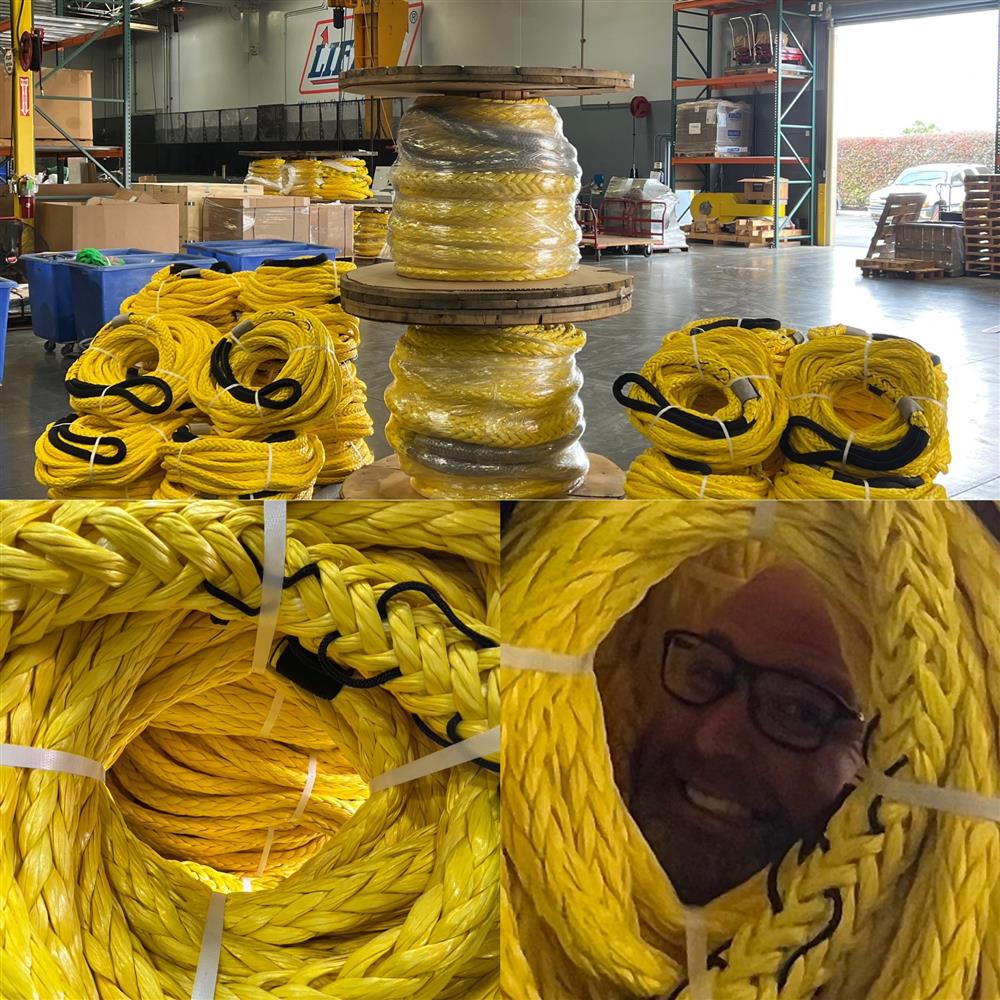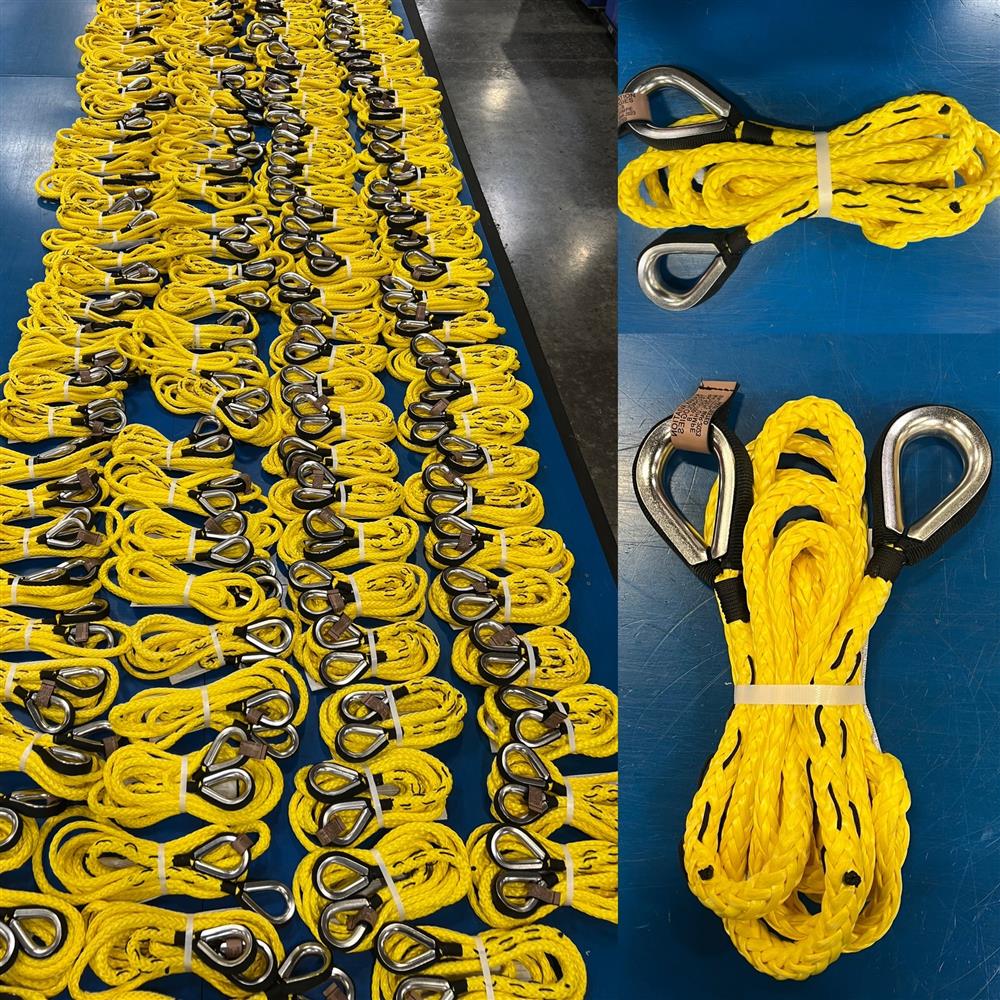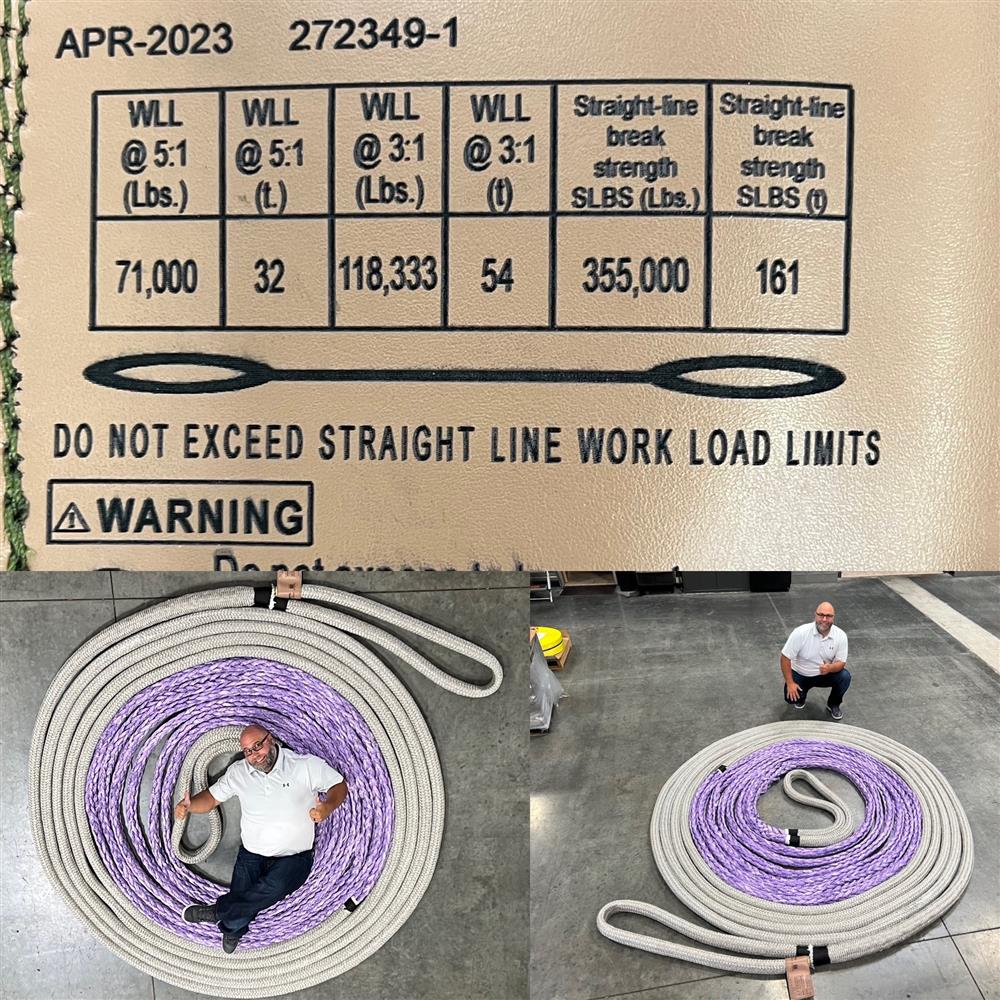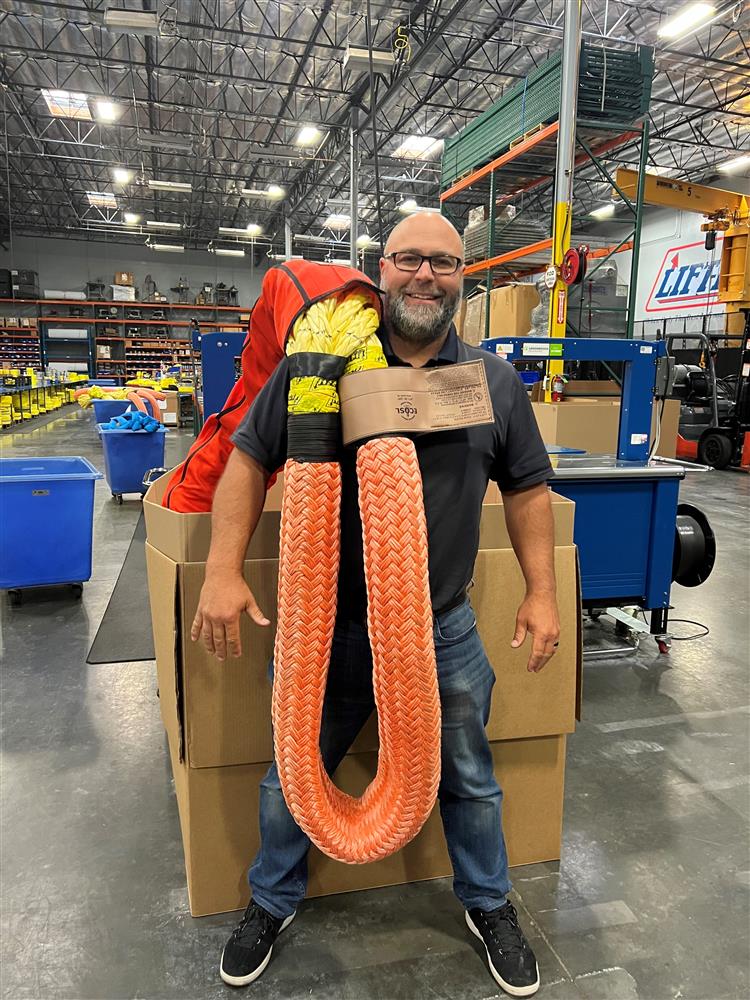Mooring Lines: Types, Applications, and FAQs
What is a mooring line?
Mooring lines, also known as mooring ropes, are an essential component of maritime operations, serving as the link between vessels and the shore or other stationary objects. They play a crucial role in ensuring the stability of ships, boats, and offshore structures. In this article, we will explore the various types of materials available, their benefits in specific applications, and address common questions that arise.
Types of Mooring Line Materials
Mooring lines, come in a variety of material types, and should be selected to suit specific applications and environments. Understanding the advantages and disadvantages of different materials is vital for ensuring the proper functioning of mooring systems. Here are the primary types of mooring lines:
-
UHMWPE – HMPE Dyneema® mooring lines.
Ultra High Molecular Weight Polyethylene (UHMWPE), specifically Dyneema®, has revolutionized the maritime industry with its exceptional strength, lightweight nature, and durability, making it an ideal material for mooring lines in marine applications. Dyneema®, known for its extremely high strength to weight ratio compared to materials like Nylon, Polyester and steel wire rope, allowing for mooring lines that are easier to handle yet can withstand heavy loads and harsh environmental conditions.
One of the key advantages of UHMWPE Dyneema® mooring lines is their lightweight construction. Compared to Nylon, Polyester and wire rope, mooring lines of the same strength made from Dyneema® are much lighter, making handling and deployment easier for maritime personnel. Additionally, its low stretch properties ensure minimal elongation during use, providing enhanced stability and reliability during mooring operations. UHMWPE mooring lines resistance to abrasion and damaging UVA-UVB radiation and low coefficient of friction further contribute to its longevity and excellent performance in marine environments.
Furthermore, UHMWPE Dyneema® exhibits excellent resistance to chemicals and marine organisms, reducing the risk of degradation over time. This makes it a cost-effective solution for mooring lines, requiring less frequent replacement and maintenance. As the maritime industry continues to prioritize efficiency, safety, and sustainability, the adoption of UHMWPE Dyneema® mooring lines represents a significant advancement in meeting these objectives.


-
Nylon Mooring Lines
Nylon mooring lines, often referred to as mooring line boat ropes, are popular in the maritime industry due to their strength, elasticity, and with double braid constructions their resistance to abrasion. They are commonly used for various vessel types, including small boats, yachts, and larger ships. The elasticity of nylon helps absorb shock loads, making it ideal for situations where vessels may experience sudden impacts or dynamic forces. Many times, if the entire line is not made from Nylon we will use shorter sections linked to HMPE mooring ropes with the Nylon section acting as a shock absorber.
-
Polyester Mooring Lines
Polyester mooring lines, also known as marine mooring ropes or marine mooring lines, offer comparable strength to nylon and available with double braid construction and have superior resistance to UV degradation when compared to Nylon. These lines are suitable for long-term mooring applications, such as permanent installations in harbors and marinas. Polyester lines are known for their durability and resistance to stretching at nearly half the elongation of Nylon, making them a reliable choice for mooring large vessels.
-
Polypropylene Mooring Lines
Polypropylene mooring lines, often used for mooring smaller recreational boats, are lightweight and have excellent buoyancy. While they lack the strength of nylon or polyester, they are well-suited for temporary or short-term mooring needs for smaller vessels. Additionally, polypropylene lines are cost-effective, which makes them a popular choice for light-duty applications or as backup lines on vessels.
-
Wire Mooring Lines
Wire mooring lines, also known as mooring cables, are constructed from stainless steel or galvanized steel and are incredibly robust, making them suitable for heavy-duty applications. They are commonly used in offshore oil and gas platforms, large commercial vessels, and ships that require high tensile strength and minimal stretch. You will find a variety of mooring lines and rope for sale by clicking here
Applications of Mooring Lines
Mooring lines, including mooring ropes for tug boat operations and ships, are deployed across a wide range of maritime and offshore applications. Understanding the specific uses of mooring lines is essential to ensure safe and efficient operations in these scenarios. Here are some common applications of mooring lines:
-
Dock and Harbor Mooring
One of the most prevalent applications of mooring lines, is in docking and harbor settings. Mooring lines secure vessels to piers, quays, and other shore-based structures. Nylon and polyester lines are often favored for this purpose due to their strength, elasticity, and with double braid constructions resistance to abrasion.

-
Anchoring and Mooring Buoys
Buoys, including boat mooring ropes, are crucial for marking channels, hazards, and providing anchorage points for vessels. Mooring lines are used to anchor these buoys in position.
-
Offshore Oil and Gas Platforms
Offshore drilling platforms rely on robust mooring lines, typically wire lines or ship mooring ropes to keep the platform in position, even in harsh sea conditions. These lines are critical for stability of the entire platform and the crew working on it.
-
Towing and Salvage Operations
In towing and salvage operations, mooring lines, are used to connect towing vessels to the vessel in need of assistance. Nylon and polyester lines are common choices due to their shock-absorbing properties, which help reduce the effects of sudden jerks or jolts during the towing process.

Frequently Asked Questions about Mooring Lines
Understanding mooring lines involves addressing a variety of questions that often arise among professionals and enthusiasts in the maritime and boating communities. Let's explore some frequently asked questions and their answers.
-
How do I choose the best mooring line for my application
Selecting the appropriate mooring line depends on several factors, including the size and weight of your vessel, the mooring environment (harbor, offshore, or buoy), and the expected loads. Nylon and polyester lines are excellent choices for most recreational boats due to their strength and elasticity. Ensure the line's diameter and length are suitable for your vessel's size and the mooring conditions.
-
How often should I inspect and replace mooring lines?
Mooring lines should be regularly inspected for signs of wear such as cutting, chafing, deformation, anomalies in shape and UV damage. The frequency of inspection depends on factors such as environmental conditions and usage. As a general rule, recreational boaters should inspect their mooring lines before use and a more detailed inspection not to exceed 12 months and replace them when they show significant signs of wear. For commercial and offshore applications, more frequent inspections may be necessary depending on the environment, duration and severity of conditions. Training, knowledge and skillset are required for rope inspection and should always be performed by a qualified person.
-
What is the proper way to store mooring lines when not in use?
Mooring lines, including mooring rope for a boat, should be stored in a cool, dry place away from direct sunlight and moisture. Coil the lines neatly to prevent knots, kinks or twists, which can weaken the line over time. Regularly clean and inspect the lines before storing them, and avoid leaving them exposed to the elements for extended periods. When using cleaning agents ALWAYS consult the rope manufacturer for guidelines and direction with detergents and cleaning agents. In most cases mild agents such Dawn® dish soap and Simple Green® can be used. AVOID all bleaching and citrus based cleaning agents.
-
Can I use a combination of mooring line rope types for mooring ships?
Yes, it is possible to use a combination of mooring line rope types such as Nylon, Polyester and UHMWPE to achieve the desired balance of strength, elasticity, and cost-effectiveness. For example, you may use nylon lines for shock absorption and UHMWPE Dyneema® lines for their buoyancy in a buoy mooring system. Ensure that each line is appropriately sized for strength and spatial relation ensuring secure connection.
-
What is the breaking strength of a mooring line, and how is it determined?
The breaking strength of a mooring line, including ship mooring rope, refers to the maximum load the line can withstand before it breaks. It is determined through testing by manufacturers and is usually indicated on the line's label or packaging. The breaking strength depends on the material, diameter, and construction of the mooring line. It is essential to choose a mooring line with a breaking strength that exceeds the expected loads. This process uses the “MBS” or minimum breaking strength divisible by the “FOS” factor of safety also referred to as “Design Factor”. Through this process the Qualified person derives the “WLL” work load limit which shall never be exceeded.
Safety concerns related to rope breaking and snap back in mooring applications are paramount, emphasizing the importance of maintaining a safe distance from such operations. The potential risks associated with these incidents include severe injuries and even fatalities. Understanding and addressing these concerns is crucial for ensuring the well-being of personnel involved in mooring activities.
- High Tensile Forces: Mooring lines, especially those made from materials like UHMWPE Dyneema, can experience high tensile forces during operations. If a rope breaks under tension, the release of energy can result in a dangerous snap back, posing a significant risk to anyone in its path.
- Whipping Effect: The snap back of a broken mooring line can create a whipping effect, which can be exaggerated when going around bollards or cleats, causing the loose end to rapidly move in unpredictable directions. This may lead to severe injury or death as individuals in the vicinity may be struck by the recoiling line.
- Projectile Hazard: In the event of a mooring line breaking, broken fragments or the entire line can become projectiles, posing a threat to personnel, equipment, and nearby structures. The force with which these projectiles travel can cause substantial damage.
- Abrasion and Wear: Mooring lines are subjected to constant environmental stress, including abrasion and wear. Over time, this can weaken the integrity of the ropes, increasing the likelihood of breakage. Regular inspection and preventative maintenance such as installation of chaffing protection are crucial to identifying and addressing potential issues before they escalate.
-
How do I attach a mooring line to my vessel and the mooring point?
The method of attaching a mooring line to your vessel and the mooring point varies depending on the specific hardware and setup. Common methods include using cleats, knots (such as the bowline or cleat hitch), and specialized hardware like shackles and thimbles. Follow the manufacturer's recommendations and best practices to ensure secure and reliable attachments.
-
Are there any eco-friendly mooring line options?
There is a growing interest in eco-friendly and sustainable alternatives to traditional mooring lines, including mooring lines for ships. Some manufacturers now offer mooring lines made from recycled materials or biodegradable options. These eco-friendly lines aim to reduce the environmental impact of discarded or lost mooring lines in oceans and waterways.
Conclusion
Mooring lines, including mooring ropes for boats and ships, play a vital role in maritime operations, ensuring the stability of vessels in a wide range of applications. Understanding the types of mooring lines available and their appropriate applications is crucial for anyone involved in boating, shipping, or offshore industries. By addressing common questions and providing insights into mooring line selection and maintenance, we hope to enhance your knowledge and promote safe and efficient mooring practices in these vital sectors.

